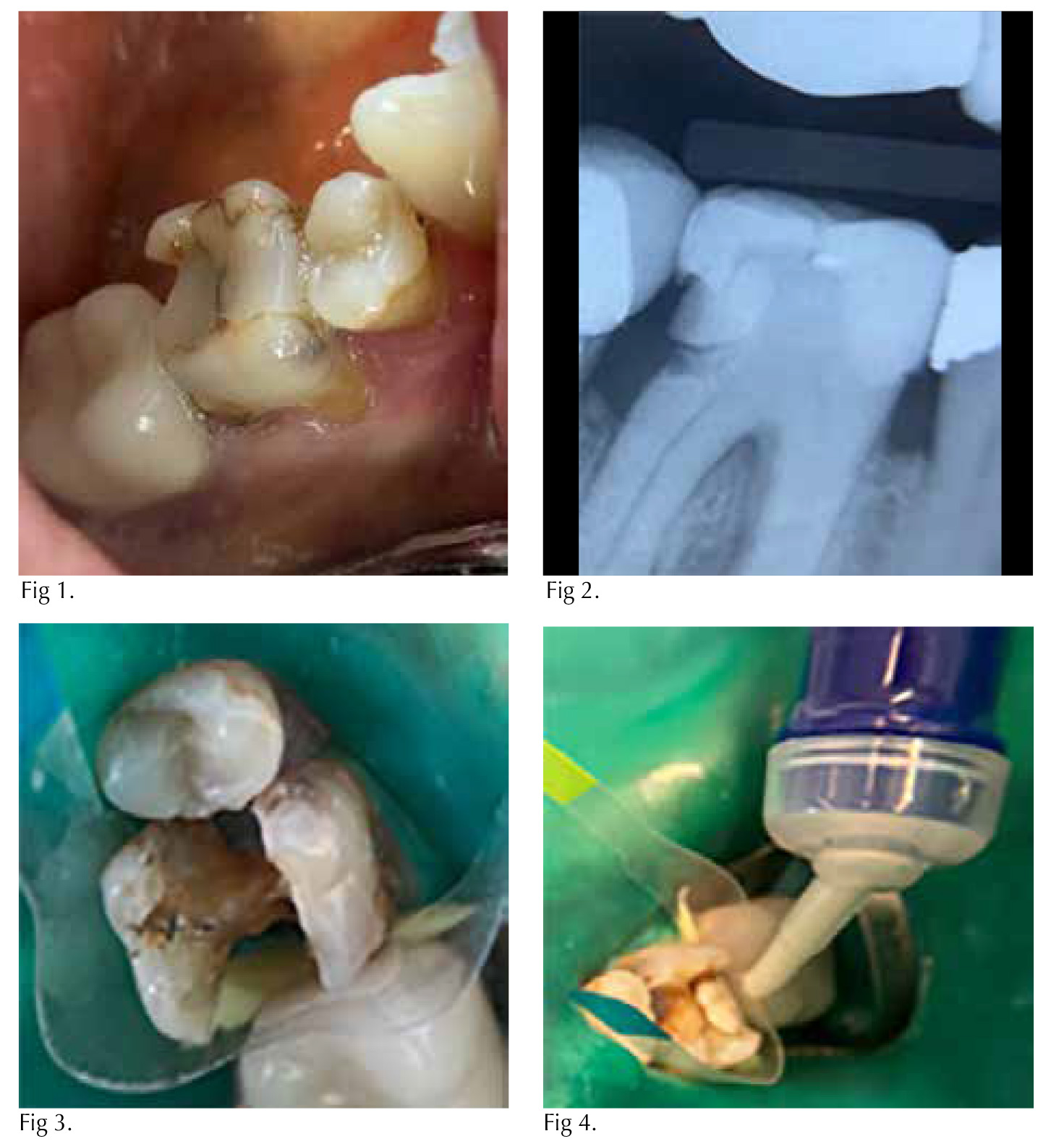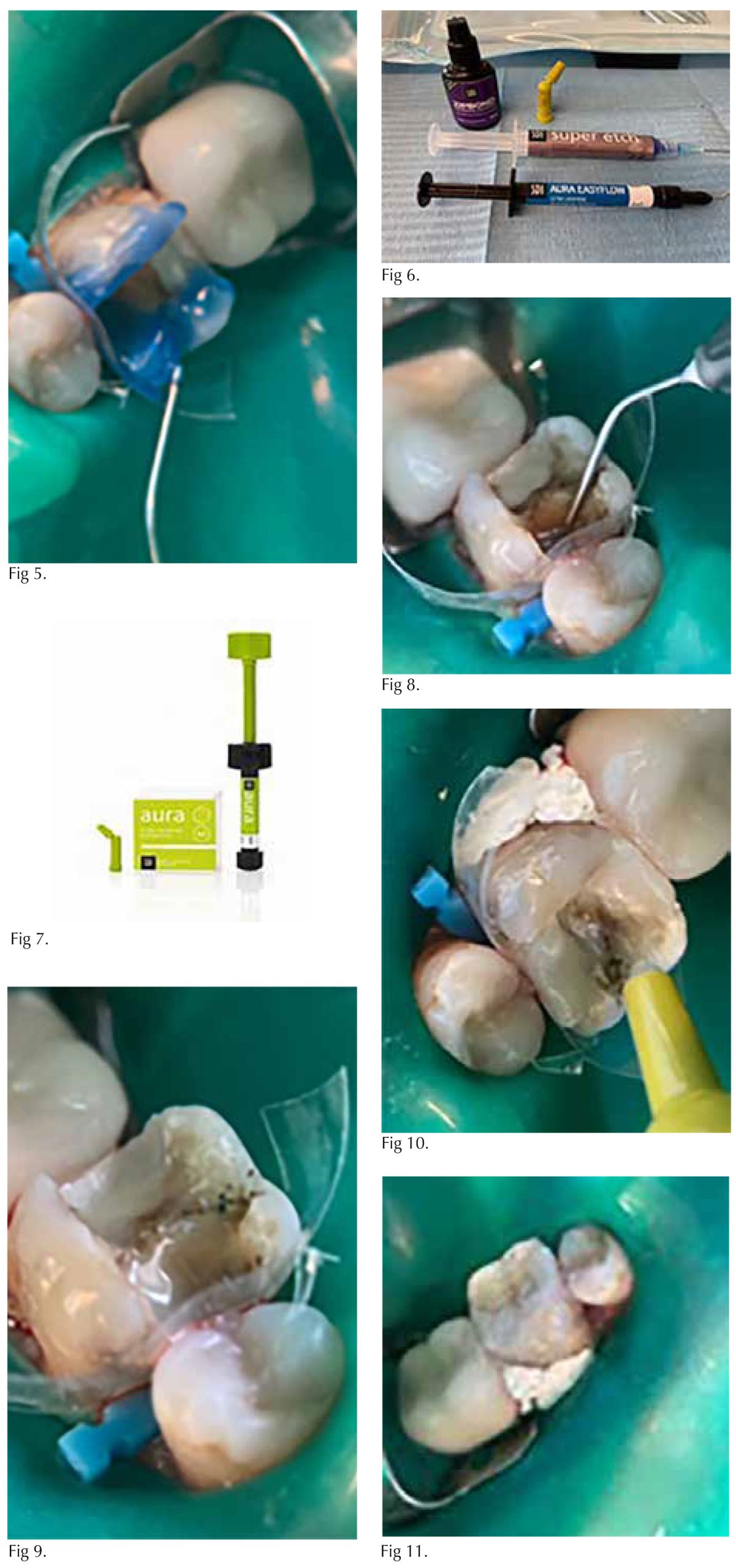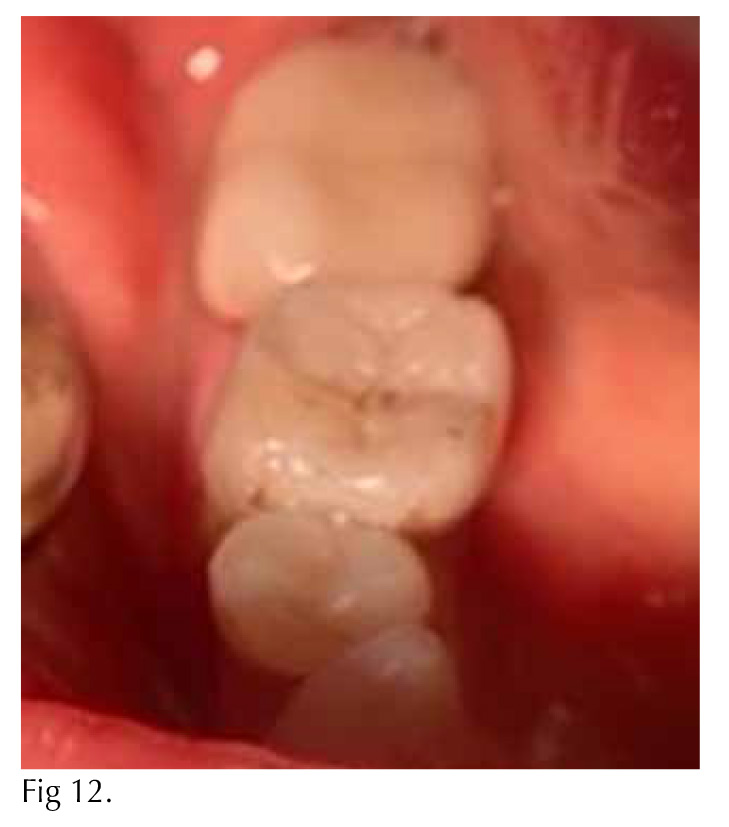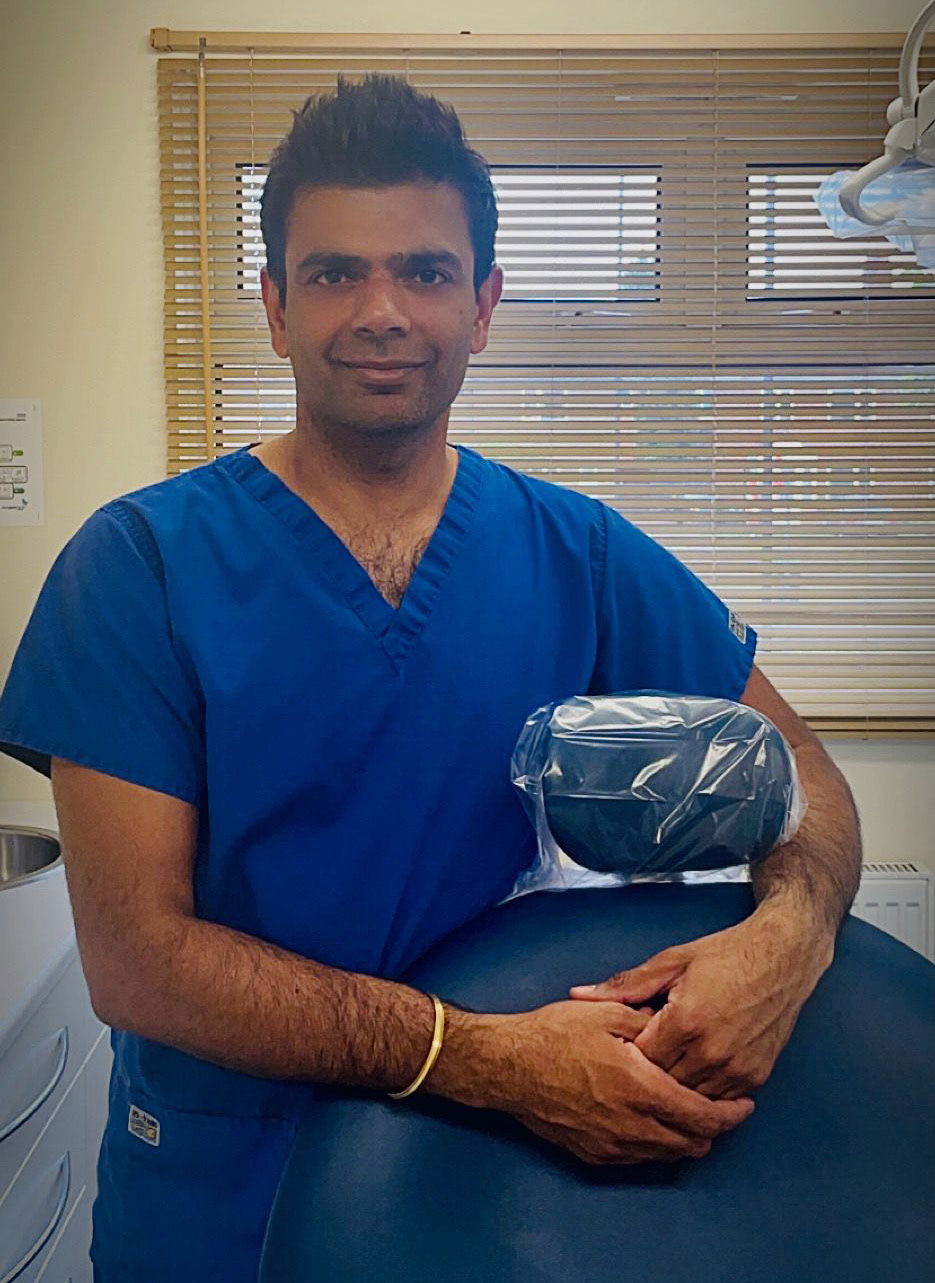Jatinder Heer presents a recent case study.
A 60-year-old female patient attended for restoration of the lower right first molar which had a previous history of extensive restoration. There were no symptoms although clinically and radiographically this tooth could be seen to have extensive restoration and breakdown extending on to the root. Functionally, the tooth was subjected to extensive masticatory forces, so the option of a direct robust restorative method was considered to be the optimal option to preserve as much tooth tissue as possible and minimise the likelihood of further tooth fracture.
Clinically, the tooth exhibited distal fracture and only the thin buccal and lingual enamel walls remained. Complete restoration removal and replacement was considered appropriate with ongoing pulpal sensibility review.
Clinical stages
Initially the tooth was isolated and the existing restoration removed by a careful minimally invasive technique. The distal portion was restored with Riva HV. A clear sub-gingival matrix was positioned. This material is an ideal base material for such an extensively broken-down tooth. Riva Self Cure HV is a glass ionomer material which is ideal for replacing lost dentine. It has excellent adhesive properties coupled with sustained fluoride release.
Once this material had been placed it was allowed to set chemically. A selective 15-second enamel etch was carried out with 37 per cent Phosphoric acid (SDI Super Etch), and then Zipbond resin was applied and gently scrubbed into the etched tooth surface and dentine. The resin was then gently air dried and light cured for 10 seconds.
A flowable composite (Aura Easyflow) was applied taking particular care to avoid any air pockets prior to light curing. (The cavity margins can be checked with a sharp instrument prior to curing to ensure good application).
Aura Bulk Fill is a single shade posterior nanohybrid composite with the optimal physical properties required for a posterior composite. It is easy to place and has a 5mm depth of cure. The strength is derived from the ultra-high density glass filler.
The composite was placed and light cured for 20 seconds. The technique employed for this occlusal restoration was to build up the cusps and light cure to reduce the risks of postoperative pain.
The mesial box was restored with Aura EasyFlow. The subgingival clear matrix and wedge was seen to cause some bleeding which was controlled and stabilised with PTFE tape. This affected the cervical margin and care was taken to ensure the bonding surfaces remained uncontaminated. Aura Bulk Fill was then used to gradually build up the cusps and restore the tooth crown. This is a universal shade nano hybrid composite with excellent compressive strength properties. A durable restoration was sought for this challenging restoration.
The final result
This case is an everyday restorative challenge where a restoration has fractured and the patient is keen to pursue a direct restoration. The tooth presented with extensive breakdown and pulpal sensibility will require evaluation.
The case summary aims to demonstrate the workflow related to a direct technique using an SDI materials. The Aura Bulk Fill composite used in conjunction with Riva Self Cure HV gives the remaining lingual and buccal enamel walls optimum support to reduce the risks of further breakdown.




Dr Jatinder Heer
BDS Lond, MFGDP(UK)
Dr Jati Heer has been working as a general practitioner for twenty-five years, with a career that’s also spanned hospital environments. After setting up the JH Dental Clinic in 2001 he’s been involved in both general dentistry and acts as a referral centre for more complex cases. Dr Heer is an advocate for advancements in dentistry that are backed up by robust clinical research.





